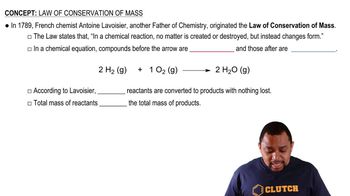Textbook Question
Methanol (CH3OH) is made industrially in two steps from CO and H2. It is so cheap to make that it is being considered for use as a precursor to hydrocarbon fuels, such as methane (CH4):
Step 1. CO(g) + 2 H2(g) S CH3OH(l) ΔS° = - 332 J/K
Step 2. CH3OH1l2 → CH4(g) + 1/2 O2(g) ΔS° = 162 J/K
(e) In what temperature range is step 1 spontaneous?
391
views




